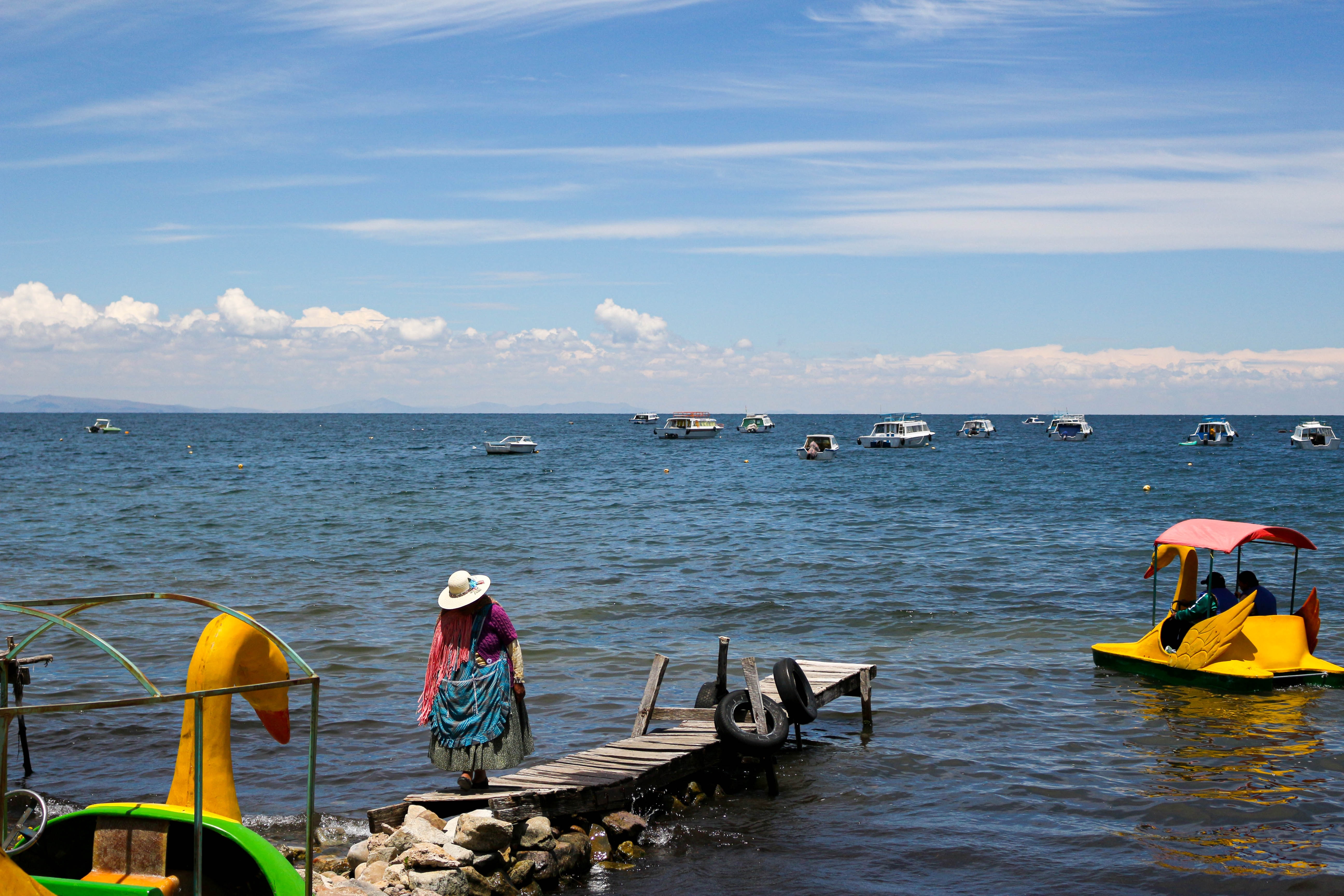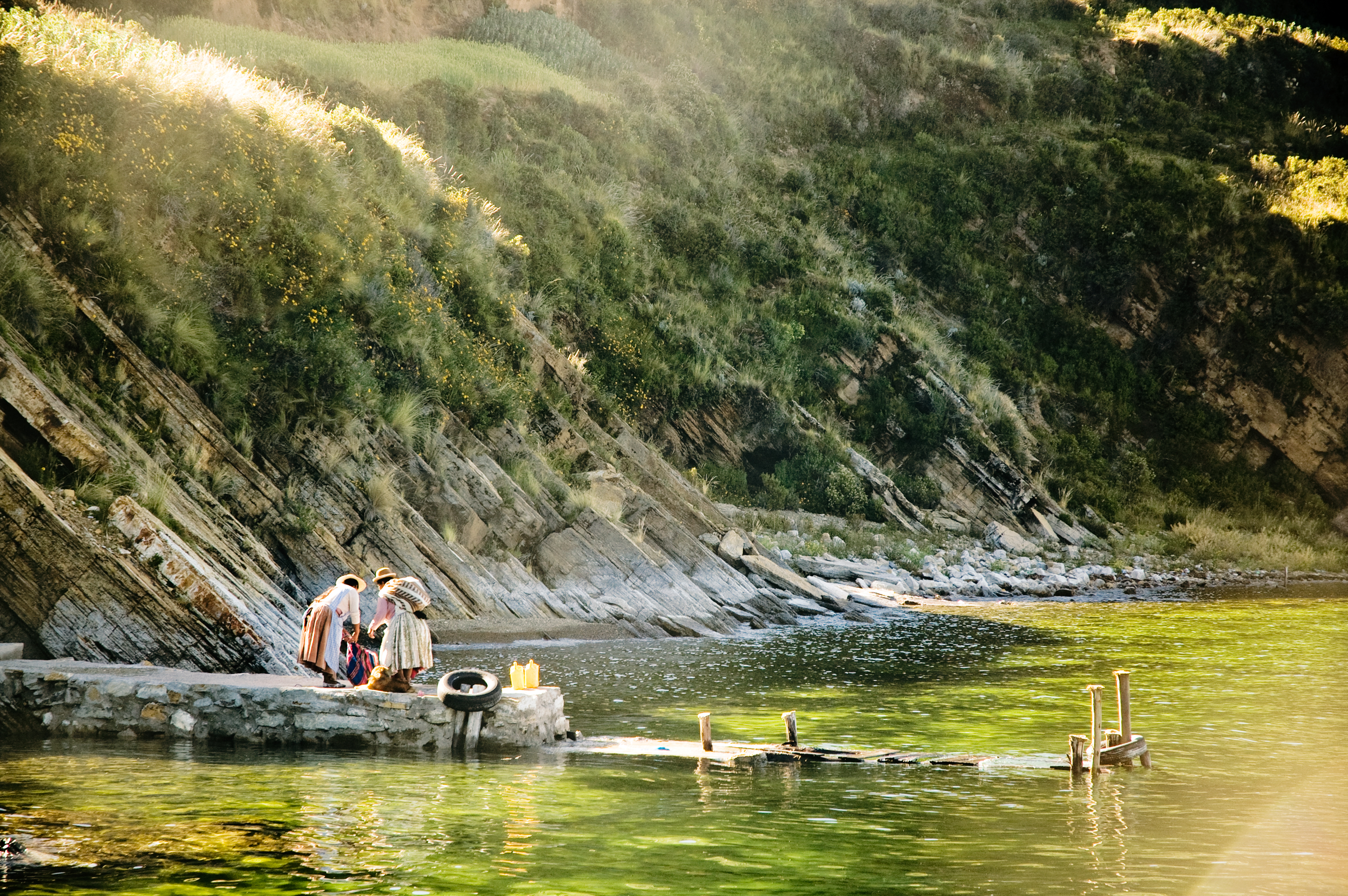
Toeristische attracties op het Titicacameer
Basiliek van Onze Lieve Vrouw van Copacabana (Copacabana) - De Basiliek van Onze Lieve Vrouw van Copacabana is een prachtige katholieke kerk gelegen in het hart van Copacabana, Bolivia. De kerk werd gebouwd in de 16e eeuw en herbergt een vereerde standbeeld van de Virgen de Copacabana, dat miraculeuze krachten zou hebben. Bezoekers kunnen de mis bijwonen in de kerk, het sierlijke interieur verkennen en het standbeeld van de Virgen de Copacabana bekijken, dat versierd is met goud en juwelen. 7:00 uur - 20:00 uur, Gratis.
Copacabana Beach (Copacabana) - Copacabana Beach is een populaire bestemming voor zowel toeristen als locals. Gelegen aan de oevers van het Titicacameer biedt het strand een prachtig uitzicht op het meer en de omliggende bergen. Bezoekers kunnen ontspannen op het zandstrand, zwemmen in het koele water van het meer of een boot huren om het meer verder te verkennen. Het strand herbergt ook verschillende restaurants en bars waar bezoekers de lokale keuken kunnen proeven en van een drankje kunnen genieten terwijl ze van het uitzicht genieten. 24 uur, Gratis.
Inca-trappen (Copacabana) - De Inca-trappen zijn een reeks oude stenen trappen die de heuvel achter de Basiliek van Onze Lieve Vrouw van Copacabana beklimmen. De trappen werden gebouwd door de Inca's en leiden naar een kleine kapel op de top van de heuvel, waar bezoekers kunnen genieten van panoramisch uitzicht op het Titicacameer en de omliggende bergen. De klim kan steil en uitdagend zijn, maar het uitzicht is de moeite waard. 24 uur, Gratis.

Horca del Inca (Copacabana) - De Horca del Inca, of Inca Galg, is een oud stenen bouwwerk gelegen op een heuvel boven Copacabana. Het bouwwerk wordt verondersteld door de Inca's te zijn gebruikt voor astronomische waarnemingen en offers. Bezoekers kunnen naar de top van de heuvel klimmen voor panoramisch uitzicht op het Titicacameer en de omliggende bergen, evenals een nauwere blik op de Horca del Inca. 24 uur, Gratis.
Eiland van de Zon (Titicacameer) - Het eiland van de zon is een populaire bestemming voor dagtochten vanuit Copacabana. Volgens de legende was het eiland de geboorteplaats van het Inca-rijk en het herbergt veel oude ruïnes en heilige plaatsen. Bezoekers kunnen boottochten maken naar het eiland en wandelen naar de verschillende ruïnes, waaronder het Chincana-complex en de Tempel van de Zon. Het eiland staat ook bekend om zijn prachtige natuurlijke schoonheid, met panoramisch uitzicht op het meer en de omliggende bergen. 9:00 uur - 17:00 uur, 50.00.
Calvario-heuvel (Copacabana) - De Calvario-heuvel is een heilige plek en populaire bedevaartsbestemming voor katholieken in Bolivia. De heuvel bevindt zich aan de rand van Copacabana en heeft een reeks van 14 kruisen die de kruiswegstaties vertegenwoordigen. Bezoekers kunnen de heuvel beklimmen en het pad volgen naar elk van de kruisen terwijl ze genieten van panoramische uitzichten over Copacabana en het Titicacameer. De beklimming kan steil en uitdagend zijn, maar het is de moeite waard voor de prachtige uitzichten en spirituele ervaring. Het is aanbevolen om tijdens de Heilige Week te bezoeken wanneer de heuvel versierd is met bloemen en kaarsen. 24 uur per dag, Gratis.
Museo de la Basilica de Copacabana (Copacabana) - Het Museo de la Basilica de Copacabana is een klein museum gelegen binnen de Basilica of Onze-Lieve-Vrouw van Copacabana. Het museum heeft een collectie religieuze kunst en artefacten, waaronder schilderijen, beeldhouwwerken en textiel. Bezoekers kunnen leren over de geschiedenis en betekenis van de Virgen de Copacabana, evenals de rol van de basiliek in het Boliviaanse katholicisme. Het museum is een must-visit voor kunst- en geschiedenisenthousiasten en degenen die geïnteresseerd zijn in de intersectie van religie en cultuur in Bolivia. 8:00 uur - 12:00 uur, 14:00 uur - 18:00 uur, 10.00.

Copacabana Markt (Copacabana) - De Copacabana Markt is een levendige en bruisende markt gelegen in het centrum van de stad. De markt is een geweldige plek om de lokale cultuur te ervaren en traditioneel Boliviaans eten en drinken te proeven. Bezoekers kunnen langs de kraampjes struinen en handgemaakte ambachten, textiel en souvenirs kopen. De markt herbergt ook verschillende eetkraampjes waar bezoekers lokale gerechten kunnen proeven, zoals empanadas, salteñas en api, een traditionele Boliviaanse drank gemaakt van paarse maïs. De markt is een must-visit voor fijnproevers en degenen die geïnteresseerd zijn in het ervaren van de lokale cultuur. 8:00 uur - 18:00 uur, Gratis.
Tiquina Strait (Copacabana) - De Tiquina Strait is een smal kanaal dat de twee hoofdsecties van het Titicacameer scheidt. De straat ligt net buiten Copacabana en is een populaire plek om schilderachtige foto's te maken en te genieten van de natuurlijke schoonheid van het meer. Bezoekers kunnen ook een veerboot nemen over de straat om het stadje San Pedro de Tiquina aan de andere kant van het meer te bezoeken. De Tiquina Strait is een must-visit voor natuurliefhebbers en degenen die de omgeving van Copacabana willen verkennen. 24 uur, Gratis.
Casa Cultural Ciudad Blanca (Copacabana) - Casa Cultural Ciudad Blanca is een cultureel centrum in het hart van Copacabana. Het centrum beschikt over een collectie kunst, muziek en culturele tentoonstellingen die de geschiedenis en tradities van de regio laten zien. Bezoekers kunnen concerten bijwonen, dansvoorstellingen en kunsttentoonstellingen, evenals deelnemen aan workshops en lessen over traditionele Boliviaanse ambachten en koken. Het centrum is een must-visit voor mensen die geïnteresseerd zijn in kunst en cultuur van Bolivia en de Andes-regio. 10:00 - 18:00 uur, gesloten op maandagen, Gratis.